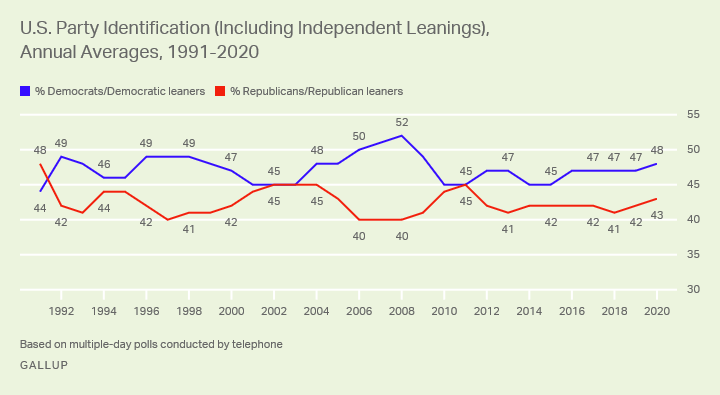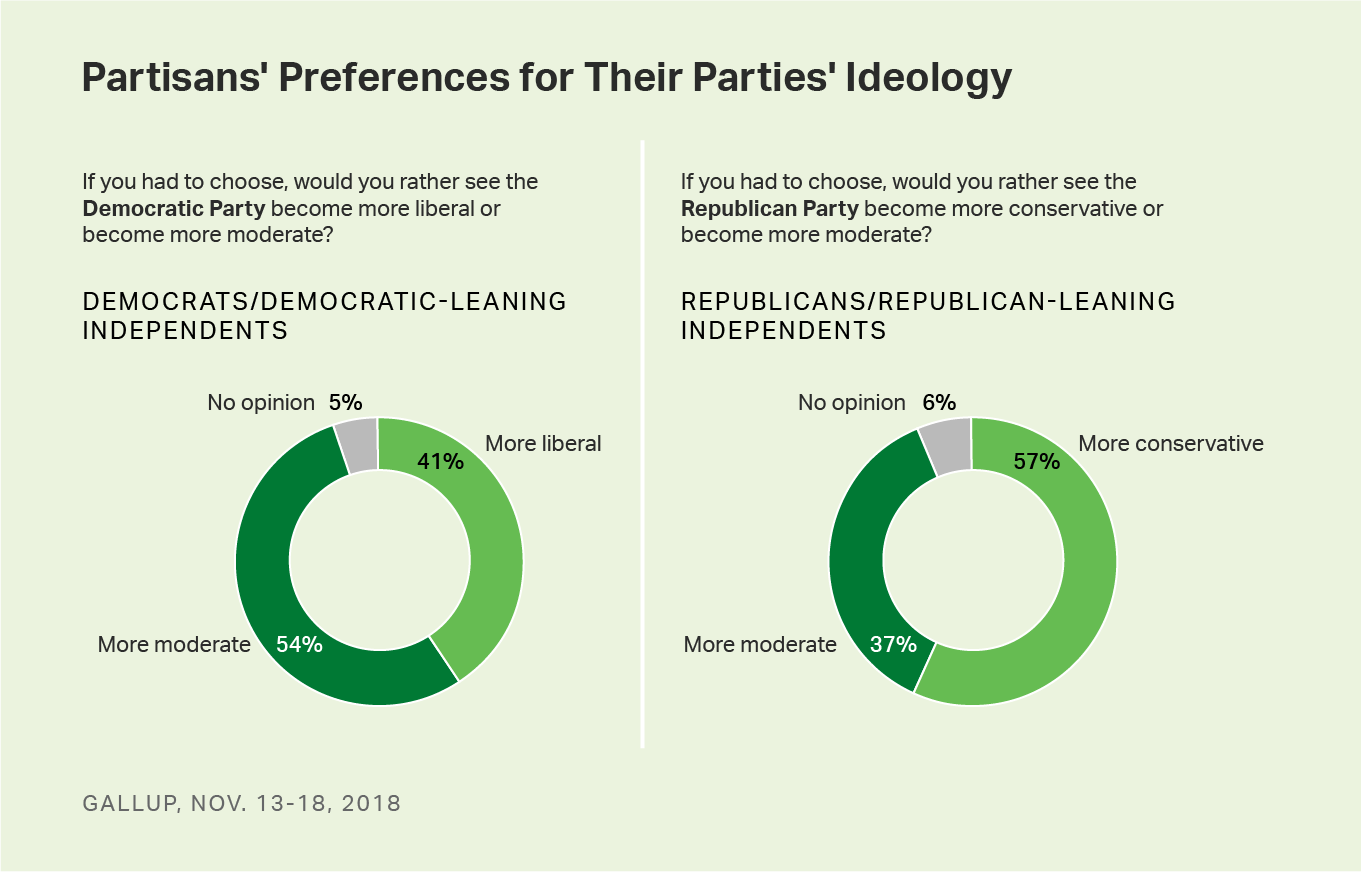How ideologically diverse are America’s political parties?
Critical Analysis
According to the data from the chart, what percentage of Democrats currently identify as politically conservative?
According to the data from the chart above, are there currently more liberal Republicans or conservative Democrats in the U.S.?
In the past (see chart below*) there were many conservative Democrats as well as liberal Republicans. In other words, there was a high amount of party ideological diversity. Based on the data from the chart above, make a generalization about the diversity of political ideology in the two major U.S. political parties today.
What best explains the current lack of party ideological diversity?
In the American political system, the winner takes all voting system (you win by 1 vote, you get the entire victory) leads to big tent political parties. That is, big parties, that invite all kinds of ideological diversity, so that they outnumber their opponents. It’s been thought, throughout the years, that the bigger the tent the more likely a part was to win. Based on the data from the chart above, which party has the bigger tent?
Republican members of Congress have been much more cohesive and unified in their voting than Democrats. Specifically, Republicans in Congress recently voted unanimously against the Freedom to Vote Act. Meanwhile, the Democrats have been unable to get their own party members to agree on the current Biden budget bill. Explain how the diversity of the Democratic political party impact their ability to pass legislation.
What information not included in this chart, would be helpful to make a good prediction of which party would win an upcoming election?
Based on the chart below, describe how political ideology has changed within the Democratic Party over the past two decades?*
Joe Manchin (WV) and Bernie Sanders (VT) are both Democrats. But as far as their ideology goes, Manchin is conservative while Sanders is Liberal. What about the American political process, U.S. elections, and demographics explains the ideological difference of these two members of the same party.
Although having such a diverse political makeup has its challenges, that diversity could be helping the Democratic Party maintain its edge over Republicans in party affiliation (the total number of members of that party). Even as the two parties are closely split when it comes to firm party identifiers, Democrats have held the significant edge in leaned party for most of the past two decades, including by 48% versus 42% so far this year (see chart below)*. In the long run, make a claim about whether the ideological diversity of the Democratic Party will help the party win elections.
Learning Extension
Look at more charts and read more about the changes in ideology of American political parties.
Action Extension
Mark your own personal political party affiliation and political ideology on this chart. If you feel comfortable, share your chart location with class.
Visual Extension
Our searchable archive of over 1000 lessons to build U.S. government and politics content knowledge and skills. Cancel at any time. Use promo code SIGNMEUP at checkout to get the first month of our monthly subscription for free!





